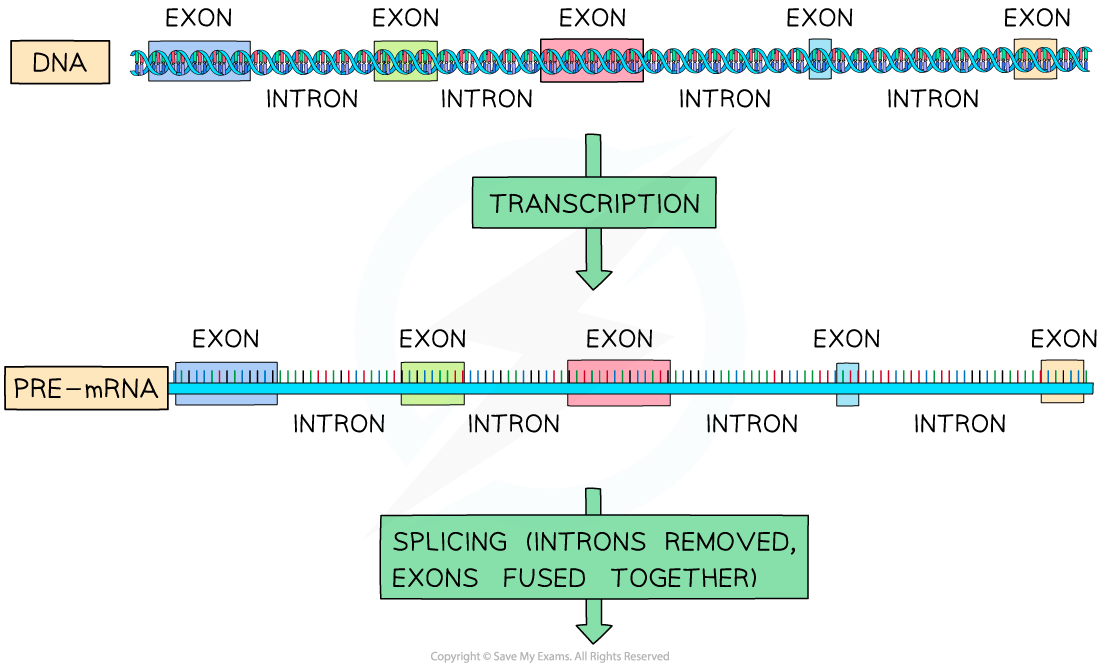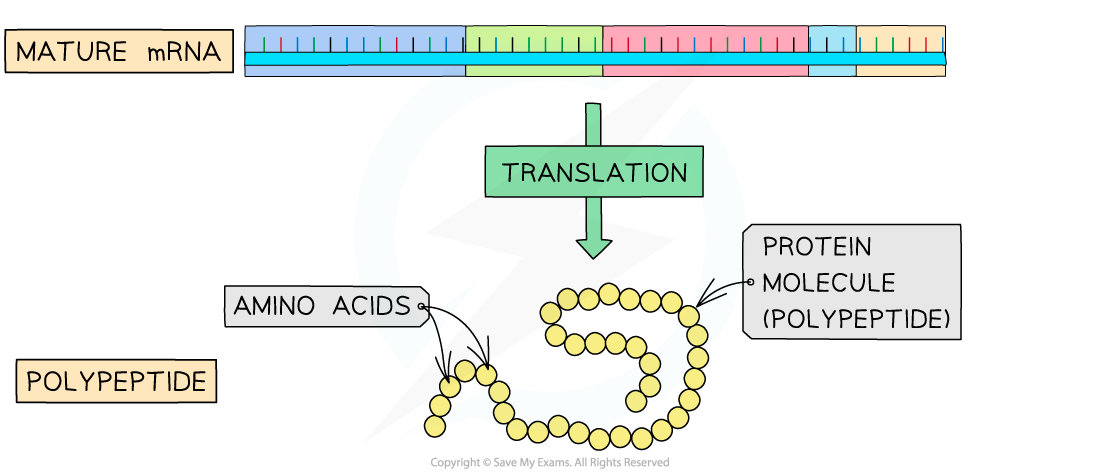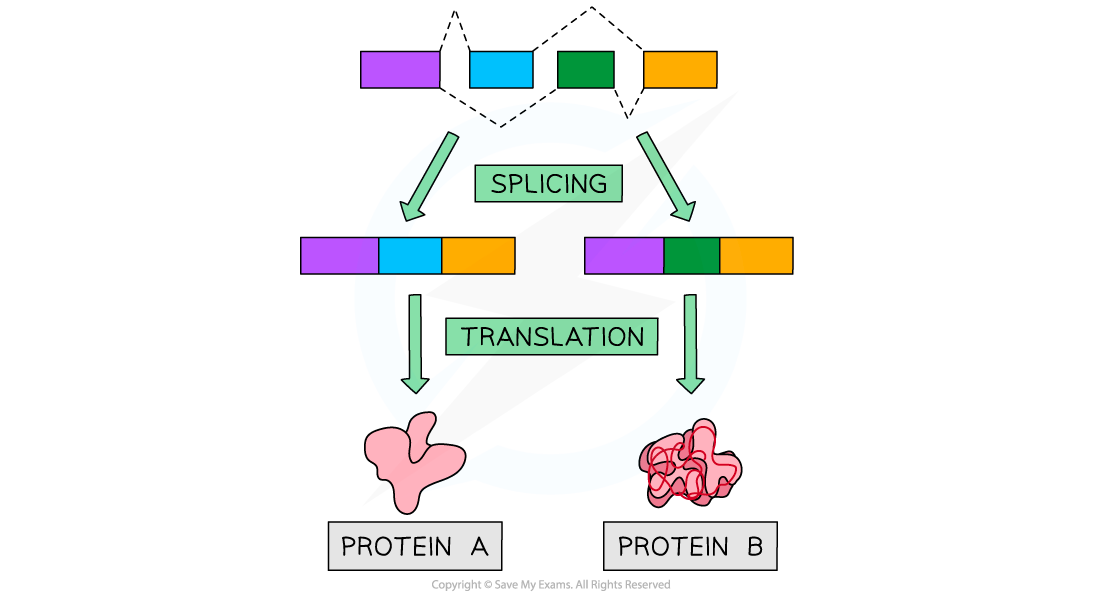Modification of RNA
- In all kingdoms of life, gene expression can be regulated after an mRNA transcript has been produced
- Post-transcriptional modification of mRNA
- Helps prevent degradation
- mRNA is single stranded and therefore, inherently unstable
- Increases the efficiency of protein synthesis
- In eukaryotes, expands the complexity of the proteome
- Helps prevent degradation
- Prokaryotic mRNA does not require any significant post-transcriptional modification as translation can occur immediately which prevents degradation of the mRNA
- In eukaryotes, transcription and translation occur in separate parts of the cell, allowing for significant post-transcriptional modification to occur
- In eukaryotes, the immediate product of an mRNA transcript is called pre-mRNA which needs to be modified to form mature mRNA
- Three post-transcriptional events must occur
- A methylated cap is added to the 5' end to protect against degradation by exonucleases
- A poly-A tail (long chain of adenine nucleotides) is added to the 3' end for further protection and to help the transcript exit the nucleus
- Non-coding sequences are removed through mRNA splicing
mRNA Splicing
- Eukaryotic genes contain both coding and non-coding sequences of DNA
- Coding sequences are called exons
- Non-coding sequences are called introns
- During transcription the whole gene is transcribed including all introns and exons
- Introns are not translated as they do not code for amino acids and need to be removed
- Before the pre-mRNA exits the nucleus, splicing occurs, during which
- Introns (non-coding sections) are removed
- Exons (coding sections) are joined together
- The resulting mature mRNA molecule contains only exons and exits the nucleus before joining a ribosome for translation


The RNA molecule (known as pre-mRNA) produced from the transcription of a gene contains introns that must be removed (to form mature mRNA) before translation can occur
Alternative splicing
- The exons (coding regions) of genes can be spliced in many different ways to produce different mature mRNA molecules through alternative splicing
- A particular exon may or may not be incorporated into the final mature mRNA
- Polypeptides translated from alternatively spliced mRNAs may differ in their amino acid sequence, structure and function
- This means that a single eukaryotic gene can code for multiple proteins
- This is part of the reason why the proteome is much bigger than the genome

Image showing the alternative splicing of a gene to produce two different proteins
Exam Tip
It is important you learn the terms pre-mRNA and mRNA, their location and whether they include introns as well as exons. A handy way to distinguish between introns and exons is to remember that EXons are EXpressed.
